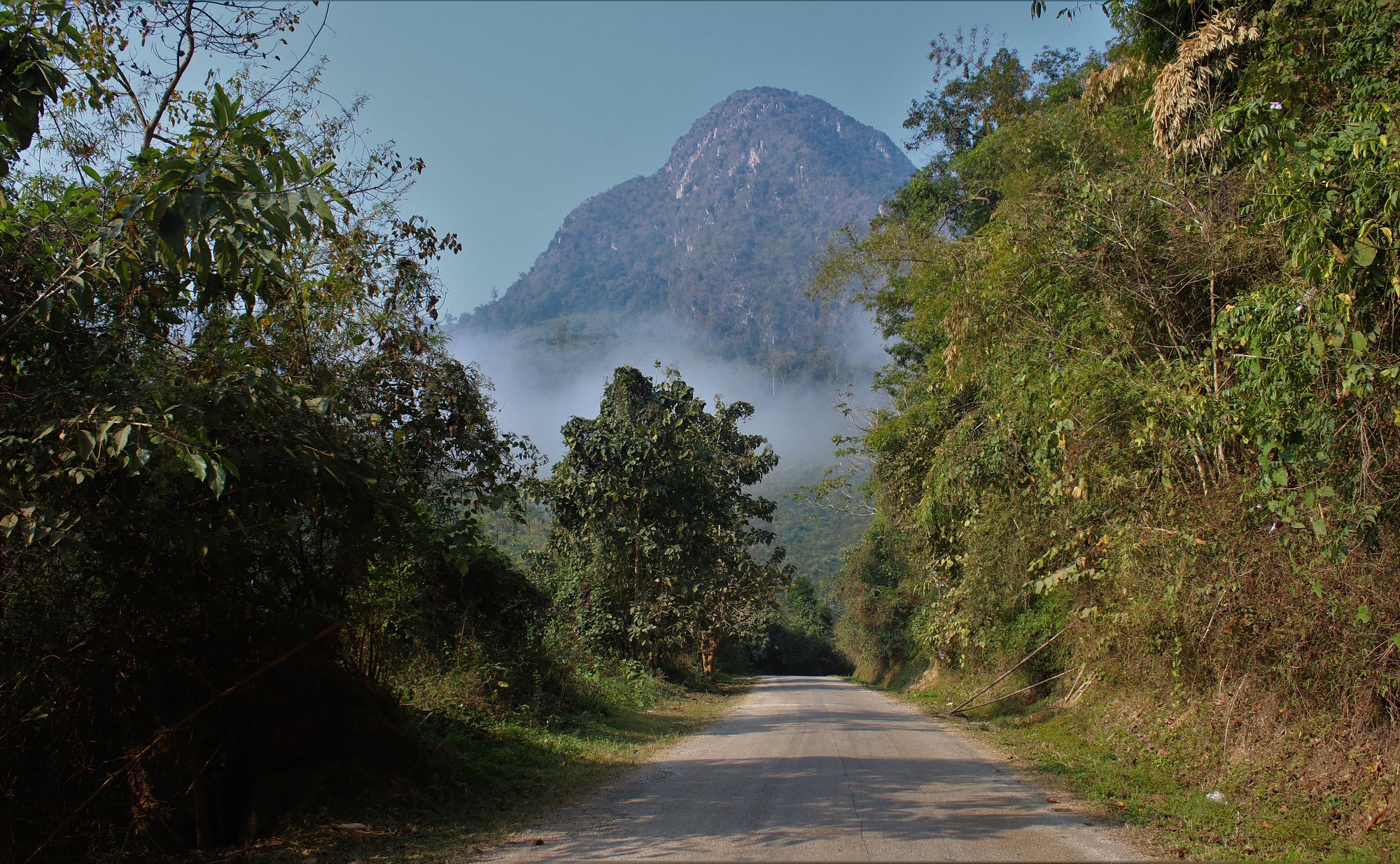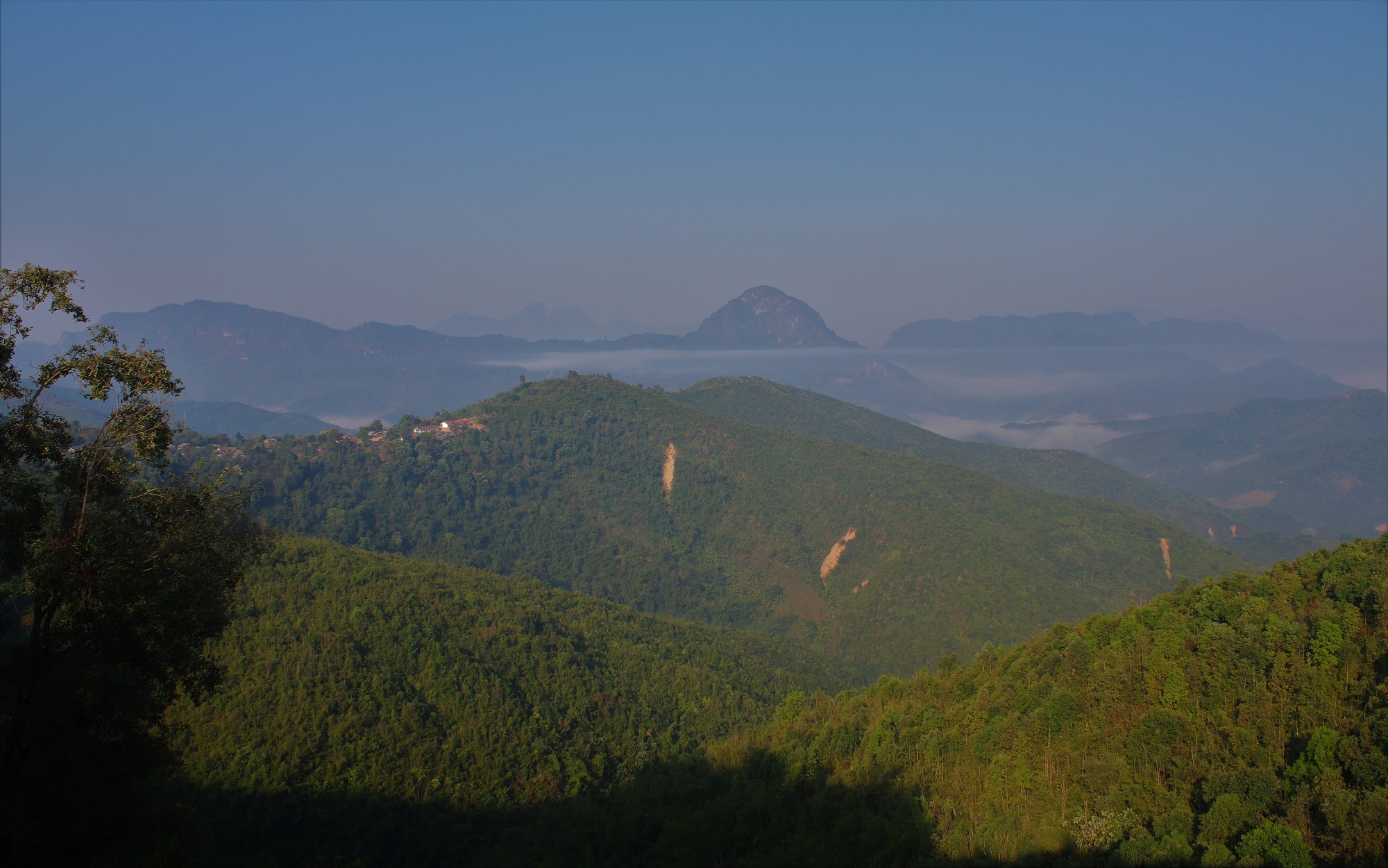Key Places:
Laos: Northern Loop Cycling Holiday
Rural Lao
Plain of Jars
The Plain of Jars is a huge archaeological complex. The stone jars are over 2,000 years old. Believed to be Iron Age burial urns, their true origin remains a mystery and legend has it that they could have been created to brew potent rice wine to celebrate the victory of a band of mythical giants over their enemies; others say the jars held whisky for a thirsty giant who lived in the mountains above Phonsavan.
The original inhabitants of the Plain of Jars were Austro-Asiatic hunter gatherers and skilled river navigators. Trading routes existed through the mountains and waterways. The most important river route was the Mekong because of its many tributaries. the Nam (River) Ngum which originates in the hills north of the Plain was the principal northern tributary. These water routes allowed traders to travel far and wide into rural areas where they bought cardamom, gum and many other foods.
Little is known about these ancient communities but archeological sites such as the Plain of Jars offer some insight into their history. Similar sites of funeral urns have been found in Cachar, Northern India, and in Sa Huynh, Vietnam, (also earlier prehistoric chamber graves in Houaphan and Samneua provinces).
One theory is that prehistoric salt traders had followed a caravan route from Vietnam all the way to India. Trading routes passing through Xieng Khouang were used right up until the 20th century. Salt, available in the Laotian uplands, was probably the reason the traders travelled through the plateau. It remains an important ingredient for making fermented fish paste (pla ra), a local dietary staple. Salt may have provided the communities of the Plain of Jars with a stable resource to exchange for exotic imported items such as cowry shells from the east and glass beads from the west. Traces of the shells and beads were found at the Plain of Jars by French archeologist Madeline Colani in the 1930s.
The communities who lived along this trade route may have buried their dead in the megalithic jars. But their origins and ethnicity are unclear.
There are three sites to explore and some local villages as well as Ban Xiengdi, where there is a small monastery with Buddha images.
Site 1 Ban Ang a mile north east of Phonsavan has more than 250 jars randomly placed; there is also a cave here where ashes and bones have been found. A recent excavation in 1994, revealed the carving of a human figure on the side of a jar, the first anthropomorphic image recorded at the site. Nearby, eight to twelve inches below the soil surface, seven flat stones, each covering a pit were also discovered. Six of the pits contained human bones and the seventh contained a two-foot-tall burial jar with small pieces of bone and teeth inside. These pits are thought to be sites of secondary burials, the corpses of poor people were placed in pits, while those of the nobie and wealthy were placed in the urns to dry out. This would explain their large size. Once they had been cremated in the cave, the ashes of the elite were returned to the urns, or perhaps buried in a sacred place, freeing the jars for re-use to decompose another body.
Local mythology would have it that the jars were used for distilling alcohol by a race of giants who inhabited the area, ruled by a king, named Khun Cheung, Another local story states that the jars were molded from natural materials including clay, sand, sugar, and animal products in a type of stone mix. This led the locals to believe the cave at Site 1 was actually a kiln, and that the jars were fired there and are not actually hewn from stone.
Another theory is that the jars were used to collect monsoon rainwater for caravan travelers at times when rain may have been seasonal and water was not readily available on the easiest footpaths. Rainwater would then be boiled, to become drinakble again. A practice long understood in Eastern Eurasia. The trade caravans that camped around these jars could have placed beads inside them as offerings, accompanying prayers for rain. Or the beads might simply have been unassociated lost items.
From 1964 to 1973, the Plain of Jars was heavily bombed by the U.S. Air Force operating against North Vietnamese and Pathet Lao communist forces. The U.S. Air Force dropped more bombs on Laos, primarily the Plain of Jars, than it dropped during the whole of World War II. This included 262 million anti-personnel cluster bombs. An estimated 80 million of these did not explode and remain a deadly threat to the population
In 1998 UNESCO and the LAO PDR government initiated a project to safeguard the Plain of Jars. The project aims to remove unexploded ordnance from the area and rehabilitate the plateau’s agricultural land, protect the archeoligical sites of interest for research and tourism.
MAG is a humanitarian organisation clearing UXOs (unexploded ordnances. Lao PDR is the most heavily bombed nation in the world (per capita).
Attention: The Plain of Jars was heavily bombed during the war, it is important to respect all the signs and stay along the defined trails due to bombs, UXO, and landmines
If you need assistance or wish to discuss the tour, please feel free to call us on +44 (0) 1463 417707.
Alternatively, you can email us on office@redspokes.co.uk for more information on this adventure holiday.
Key Places
There are several key places on our Laos: Northern Loop cycling holiday. Please choose from the following list for more information on each key place.









